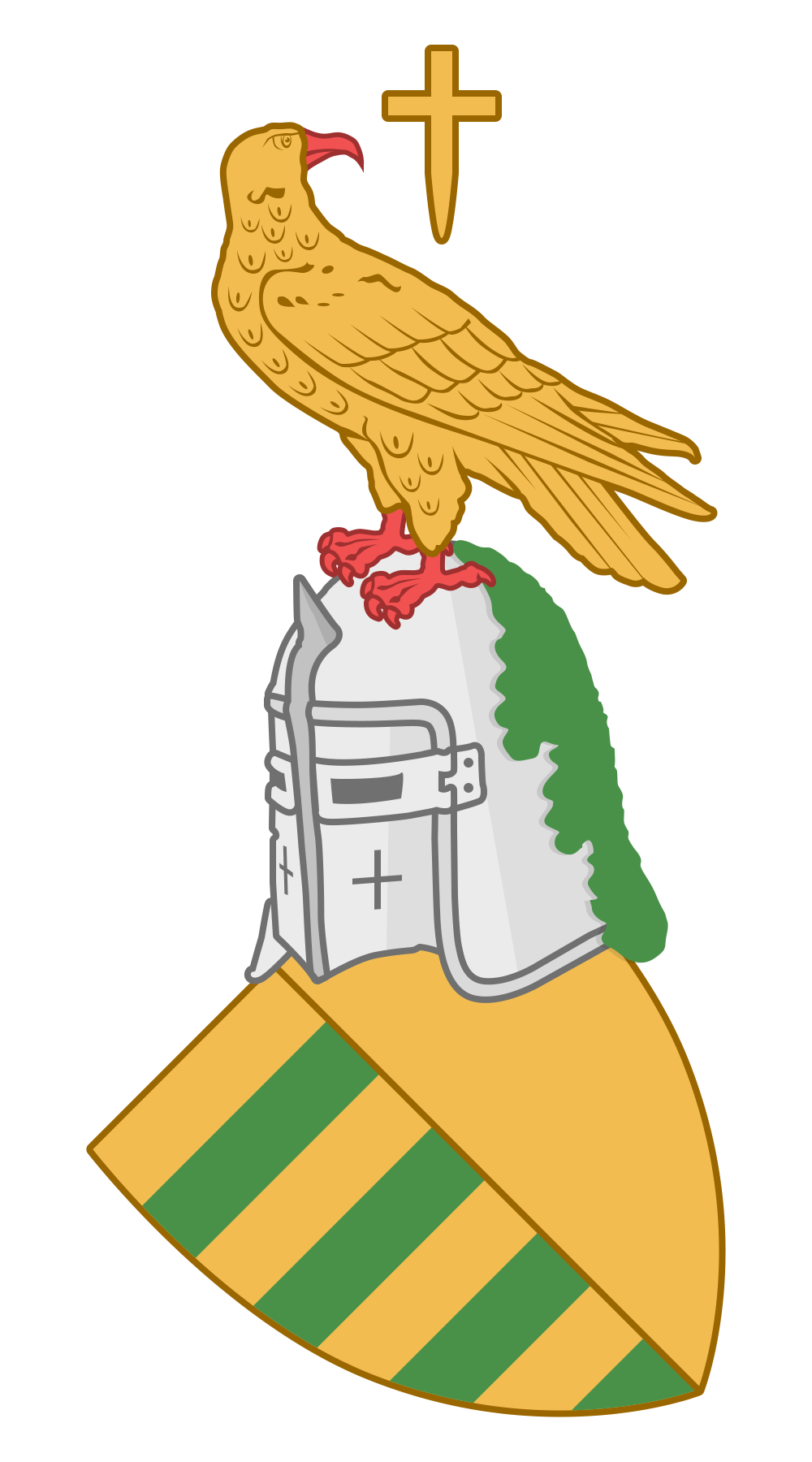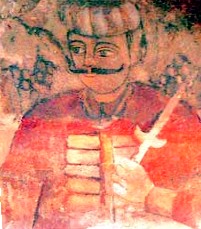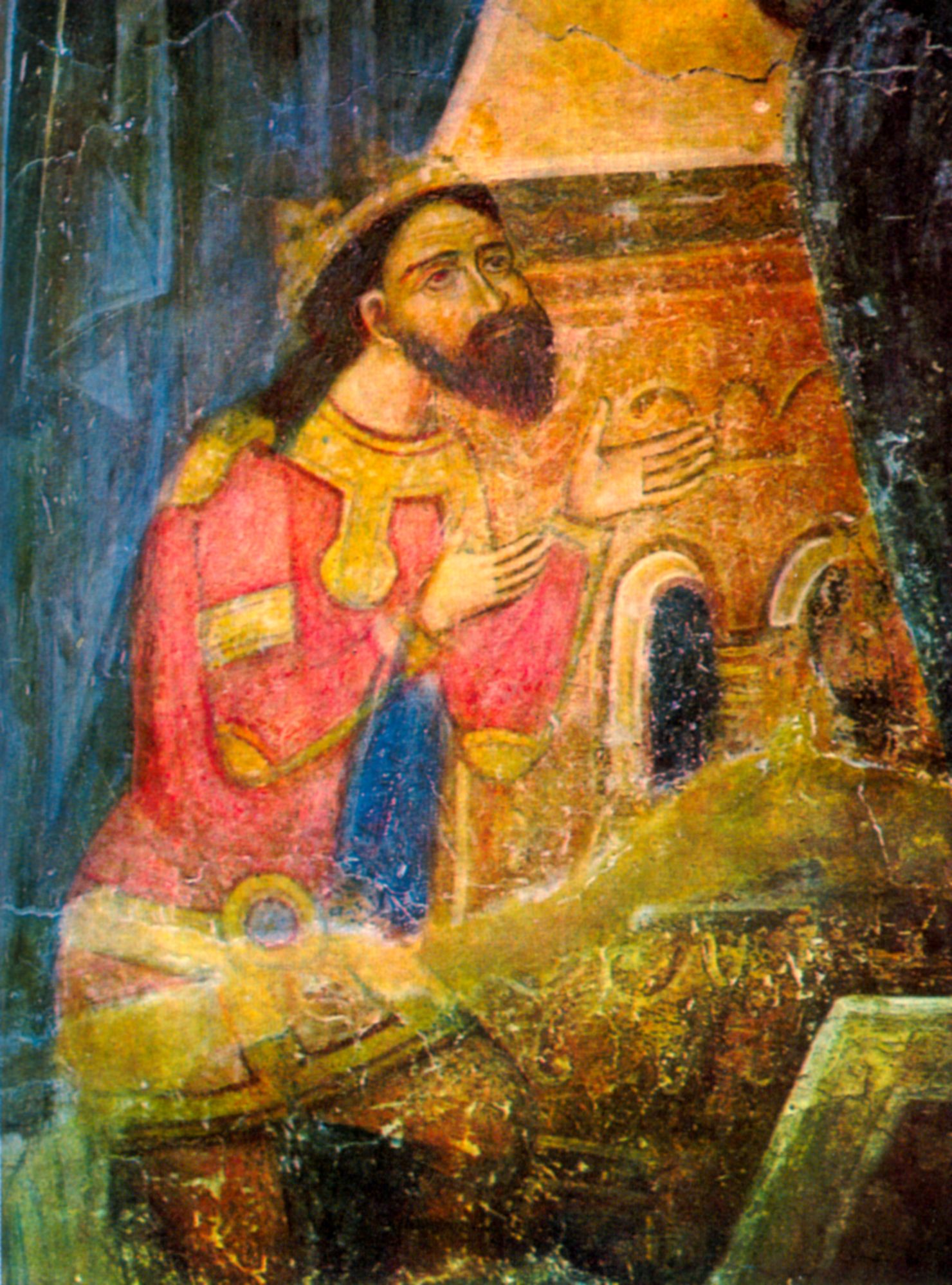|
Alexandru I Aldea
Alexander I Aldea (1397 – December 1436) was a Voivode of Wallachia Wallachia or Walachia (; ro, Țara Românească, lit=The Romanian Land' or 'The Romanian Country, ; archaic: ', Romanian Cyrillic alphabet: ) is a historical and geographical region of Romania. It is situated north of the Lower Danube and s ... (1431–1436) from the House of Basarab, son of Mircea the Elder. He came to rule Wallachia during an extremely turbulent time when rule of the country changed hands by violence eighteen times during the 15th century. Alexander I took the throne by ousting Dan II of Wallachia, father to Basarab II. Dan II was on his 5th rule of Wallachia, having gone back and forth with Radu II several times over the course of seven years during the 1420s. He was strong enough to hold the throne for what was then a considerable time, a stretch of five years. However, in the winter of 1436 he died, most probably from illness, as there are no rumours to the contrary. Upon his de ... [...More Info...] [...Related Items...] OR: [Wikipedia] [Google] [Baidu] |
List Of Rulers Of Wallachia
This is a list of rulers of Wallachia, from the first mention of a medieval polity situated between the Southern Carpathians and the Danube until the union with Moldavia in 1859, which led to the creation of Romania. Notes Dynastic rule is hard to ascribe, given the loose traditional definition of the ruling family. On principle, princes were chosen from any family branch, including a previous ruler's bastard sons, being defined as ''os de domn'', "of Voivode marrow", or as having ''heregie'', "heredity" (from the Latin ''hereditas''); the institutions charged with the election, dominated by the boyars, had fluctuating degrees of influence. The system itself was challenged by usurpers, and became obsolete with the Phanariote epoch, when rulers were appointed by the Ottoman Sultans; between 1821 and 1878 (the date of Romania's independence), various systems combining election and appointment were put in practice. Wallachian rulers, like the Moldavian rulers, bore the titles of ... [...More Info...] [...Related Items...] OR: [Wikipedia] [Google] [Baidu] |
Dan II Of Wallachia
Dan or DAN may refer to: People * Dan (name), including a list of people with the name ** Dan (king), several kings of Denmark * Dan people, an ethnic group located in West Africa **Dan language, a Mande language spoken primarily in Côte d'Ivoire and Liberia * Dan (son of Jacob), one of the 12 sons of Jacob/Israel in the Bible **Tribe of Dan, one of the 12 tribes of Israel descended from Dan * Crown Prince Dan, prince of Yan in ancient China Places * Dan (ancient city), the biblical location also called Dan, and identified with Tel Dan * Dan, Israel, a kibbutz * Dan, subdistrict of Kap Choeng District, Thailand * Dan, West Virginia, an unincorporated community in the United States * Dan River (other) * Danzhou, formerly Dan County, China * Gush Dan, the metropolitan area of Tel Aviv in Israel Organizations *Dan-Air, a defunct airline in the United Kingdom *Dan Bus Company, a public transport company in Israel * Dan Hotels, a hotel chain in Israel *Dan the Tire Man, ... [...More Info...] [...Related Items...] OR: [Wikipedia] [Google] [Baidu] |
Vlad II Dracul
Vlad II ( ro, Vlad al II-lea), also known as Vlad Dracul () or Vlad the Dragon (before 1395 – November 1447), was Voivode of Wallachia from 1436 to 1442, and again from 1443 to 1447. He is internationally known as the father of Vlad the Impaler, or Dracula. Born an illegitimate son of Mircea I of Wallachia, he spent his youth at the court of Sigismund of Luxembourg, who made him a member of the Order of the Dragon in 1431 (hence his sobriquet). Sigismund also recognized him as the lawful voivode of Wallachia, allowing him to settle in nearby Transylvania. Vlad could not assert his claim during the life of his half-brother, Alexander I Aldea, who acknowledged the suzerainty of the Ottoman Sultan, Murad II. After Alexander Aldea died in 1436, Vlad seized Wallachia with Hungarian support. Following the death of Sigismund of Luxembourg in 1437, Hungary's position weakened, causing Vlad to pay homage to Murad II, which included participating in Murad II's invasion of Tra ... [...More Info...] [...Related Items...] OR: [Wikipedia] [Google] [Baidu] |
House Of Basarab
The House of Basarab (also Bazarab or Bazaraad, ro, Basarab ) was a ruling family of debated Cuman origin, Terterids and Shishmanids) and the Wallachian dynasty (Basarabids). They also played an active role in Byzantium, Hungary and Serbia, with Cuman immigrants being integrated into each country's elite. which had an important role in the establishing of the Principality of Wallachia, giving the country its first line of Princes, one closely related with the Mușatin rulers of Moldavia. Its status as a dynasty is rendered problematic by the official elective system, which implied that male members of the same family, including illegitimate offspring, were chosen to rule by a council of boyars (more often than not, the election was conditioned by the military force exercised by candidates). After the rule of Alexandru I Aldea (ended in 1436), the house was split by the conflict between the Dănești and the Drăculești, both of which claimed legitimacy. Several late ruler ... [...More Info...] [...Related Items...] OR: [Wikipedia] [Google] [Baidu] |
Mircea I Of Wallachia
Mircea the Elder ( ro, Mircea cel Bătrân, ; c. 1355 – 31 January 1418) was the Voivode of Wallachia from 1386 until his death in 1418. He was the son of Radu I of Wallachia and brother of Dan I of Wallachia, after whose death he inherited the throne. During the reign of Mircea the Elder, Wallachia controlled the largest area in its history, gaining Dobruja in 1388, the Banate of Severin in 1388/9 and Podunavia (which is suspected to be the Timok Valley). In addition, he was also granted the fiefdoms of Amlaș () and Făgăraș () in Transylvania. The byname "elder" was given to him after his death in order to distinguish him from his grandson Mircea II ("Mircea the Younger"), although some historians believe the epithet was given to him as a sign of respect by later generations. He is considered the most important Wallachian ruler during the Middle Ages and one of the great rulers of his era, and starting in the 19th century Romanian historiography has also referred to h ... [...More Info...] [...Related Items...] OR: [Wikipedia] [Google] [Baidu] |
Wallachia
Wallachia or Walachia (; ro, Țara Românească, lit=The Romanian Land' or 'The Romanian Country, ; archaic: ', Romanian Cyrillic alphabet: ) is a historical and geographical region of Romania. It is situated north of the Lower Danube and south of the Southern Carpathians. Wallachia is traditionally divided into two sections, Muntenia (Greater Wallachia) and Oltenia (Lesser Wallachia). Dobruja could sometimes be considered a third section due to its proximity and brief rule over it. Wallachia as a whole is sometimes referred to as Muntenia through identification with the larger of the two traditional sections. Wallachia was founded as a principality in the early 14th century by Basarab I after a rebellion against Charles I of Hungary, although the first mention of the territory of Wallachia west of the river Olt dates to a charter given to the voivode Seneslau in 1246 by Béla IV of Hungary. In 1417, Wallachia was forced to accept the suzerainty of the Ottoman Emp ... [...More Info...] [...Related Items...] OR: [Wikipedia] [Google] [Baidu] |
Eastern Orthodox Church
The Eastern Orthodox Church, also called the Orthodox Church, is the second-largest Christian church, with approximately 220 million baptized members. It operates as a communion of autocephalous churches, each governed by its bishops via local synods. The church has no central doctrinal or governmental authority analogous to the head of the Roman Catholic Church—the Pope—but the Ecumenical Patriarch of Constantinople is recognized by them as ''primus inter pares'' ("first among equals"), which may be explained as a representative of the church. As one of the oldest surviving religious institutions in the world, the Eastern Orthodox Church has played a prominent role in the history and culture of Eastern and Southeastern Europe. The Eastern Orthodox Church officially calls itself the Orthodox Catholic Church. Eastern Orthodox theology is based on holy tradition, which incorporates the dogmatic decrees of the seven ecumenical councils, the Scriptures, and the tea ... [...More Info...] [...Related Items...] OR: [Wikipedia] [Google] [Baidu] |
Voivode
Voivode (, also spelled ''voievod'', ''voevod'', ''voivoda'', ''vojvoda'' or ''wojewoda'') is a title denoting a military leader or warlord in Central, Southeastern and Eastern Europe since the Early Middle Ages. It primarily referred to the medieval rulers of the Romanian-inhabited states and of governors and military commanders of Hungarian, Balkan or some Slavic-speaking populations. In the Polish-Lithuanian Commonwealth, ''voivode'' was interchangeably used with '' palatine''. In the Tsardom of Russia, a voivode was a military governor. Among the Danube principalities, ''voivode'' was considered a princely title. Etymology The term ''voivode'' comes from two roots. is related to warring, while means 'leading' in Old Slavic, together meaning 'war leader' or 'warlord'. The Latin translation is for the principal commander of a military force, serving as a deputy for the monarch. In early Slavic, ''vojevoda'' meant the , the military leader in battle. The term has ... [...More Info...] [...Related Items...] OR: [Wikipedia] [Google] [Baidu] |
Basarab II
Basarab II was the Voivode of the principality of Wallachia (1442–1443), and the son of the former Wallachian ruler Dan II of Wallachia. Basarab II ruled during a turbulent time in Wallachia, now part of present-day Romania, with his rule falling between that of the father and son rule of Vlad Dracul and Mircea II. His reign was extremely short, as during that period only the strongest could retain their hold on the region for any great length of time. He took over as ruler in August 1442, holding on to it only until the Autumn of 1443, when Vlad Dracul forced him out. During that time, the power of the Ottoman Empire became stronger with each year, making them a constant threat to independent Wallachia. Anyone who ruled Wallachia had not only the Ottomans to deal with, but the internal conflicts of their own people. Politics had to be juggled between maintaining good relations with the Hungarian Kingdom, who were often needed as powerful allies against the invasions of the Ot ... [...More Info...] [...Related Items...] OR: [Wikipedia] [Google] [Baidu] |
Radu II Of Wallachia
Radu II Praznaglava (Radu II Empty Head/in Old Slavic/), (? – 1428?) was a ruler of Wallachia in the 15th century, ruling for 4 terms, each time preceded by Dan II, his rival for the throne, and each time succeeded by him. Of those 4 periods on the throne of Wallachia, all were within a period of only 7 years, and 3 terms lasted less than a year. He ruled: * August 1420 – 1422 * summer of 1423 * autumn of 1424 * January – spring of 1427 Son of Mircea cel Batran, he was probably the last voievod of Wallachia to assert control of Banat and southern Basarabia. Dobrogea was lost in 1417. His short intervals of rulership were marked by frequent and violent clashes with his rival and cousin, Dan II, for the throne of the principality. He found shelter and military support from the Ottoman Empire, and it was this submission to the Ottomans which ultimately caused Wallachia to lose Dobrogea and other territories. Radu II is last mentioned in the spring of 1427, when Dan II atta ... [...More Info...] [...Related Items...] OR: [Wikipedia] [Google] [Baidu] |
Vlad Tepes
Vlad III, commonly known as Vlad the Impaler ( ro, Vlad Țepeș ) or Vlad Dracula (; ro, Vlad Drăculea ; 1428/311476/77), was Voivode of Wallachia three times between 1448 and his death in 1476/77. He is often considered one of the most important rulers in Wallachian history and a national hero of Romania. He was the second son of Vlad Dracul, who became the ruler of Wallachia in 1436. Vlad and his younger brother, Radu, were held as hostages in the Ottoman Empire in 1442 to secure their father's loyalty. Vlad's eldest brother Mircea and their father were murdered after John Hunyadi, regent-governor of Hungary, invaded Wallachia in 1447. Hunyadi installed Vlad's second cousin, VladislavII, as the new voivode. Hunyadi launched a military campaign against the Ottomans in the autumn of 1448, and Vladislav accompanied him. Vlad broke into Wallachia with Ottoman support in October, but Vladislav returned and Vlad sought refuge in the Ottoman Empire before the end of the year. ... [...More Info...] [...Related Items...] OR: [Wikipedia] [Google] [Baidu] |
List Of Wallachian Rulers
This is a list of rulers of Wallachia, from the first mention of a medieval polity situated between the Southern Carpathians and the Danube until the union with Moldavia in 1859, which led to the creation of Romania. Notes Dynastic rule is hard to ascribe, given the loose traditional definition of the ruling family. On principle, princes were chosen from any family branch, including a previous ruler's bastard sons, being defined as ''os de domn'', "of Voivode marrow", or as having ''heregie'', "heredity" (from the Latin ''hereditas''); the institutions charged with the election, dominated by the boyars, had fluctuating degrees of influence. The system itself was challenged by usurpers, and became obsolete with the Phanariote epoch, when rulers were appointed by the Ottoman Sultans; between 1821 and 1878 (the date of Romania's independence), various systems combining election and appointment were put in practice. Wallachian rulers, like the Moldavian rulers, bore the titles of '' ... [...More Info...] [...Related Items...] OR: [Wikipedia] [Google] [Baidu] |





.png)

